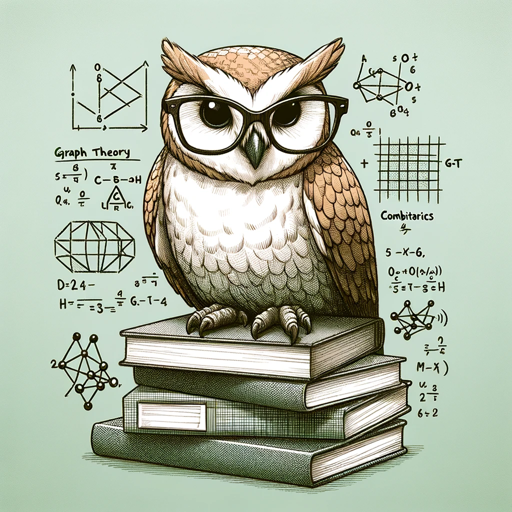Dynamic Programming Tutor-AI-powered dynamic programming tutor
Interactive AI for mastering dynamic programming.
Help me solve a problem
Explain different types of DP problems
Related Tools
Load More
Universal Primer
The fastest way to learn anything.

Discrete Math Tutor
Guiding students in understanding discrete math.

Expert Programmer
Expert in programming with a focus on simplifying code
Calculus Tutor
I help clarify calculus concepts.

Tutor
A comprehensive learning assistant that uses high-utility learning strategies to teach users about any topic of interest. v.19.05.24

Math Mentor
Math Mentor: Covers broad math topics with real-world examples.
20.0 / 5 (200 votes)
Dynamic Programming Tutor Overview
The Dynamic Programming Tutor is designed to assist students and programmers in mastering dynamic programming (DP) concepts through a Socratic method of questioning. This approach emphasizes interactive learning, where the tutor guides users step-by-step to discover solutions on their own. By breaking down complex problems into manageable sub-problems, the tutor helps users understand the principles of DP and how to apply them effectively. For example, when solving a problem like the Fibonacci sequence, the tutor would ask guiding questions to help the user recognize the overlapping sub-problems and optimal substructure properties, leading them to implement a DP solution.

Key Functions of Dynamic Programming Tutor
Guided Problem Solving
Example
A user struggling with the 'Longest Common Subsequence' problem would receive step-by-step guidance through questions like, 'How can you break down the problem into smaller sub-problems?'
Scenario
This function is applied in scenarios where users need help understanding how to decompose a problem into smaller, more manageable parts that can be solved using DP.
Concept Reinforcement
Example
To reinforce the concept of 'memoization', the tutor might ask, 'What if we store the results of sub-problems to avoid redundant calculations?'
Scenario
This function is useful for reinforcing DP concepts through repetition and application in different contexts, helping users internalize the methodology.
Visualization and Diagrams
Example
When explaining the 'Knapsack Problem', the tutor might generate a diagram to show how different items are included or excluded from the knapsack.
Scenario
Visual aids are particularly beneficial in scenarios where users need to understand complex state transitions or visualize the structure of sub-problems and their dependencies.
Ideal Users of Dynamic Programming Tutor
Students and Learners
Students at various levels, from high school to university, who are studying computer science or related fields would benefit from the DP Tutor. The interactive and guided approach helps them grasp difficult concepts more effectively than traditional learning methods.
Software Developers and Programmers
Professionals who encounter optimization problems in their work can use the DP Tutor to enhance their problem-solving skills. By understanding and applying DP techniques, they can develop more efficient algorithms and improve their coding practices.

How to Use Dynamic Programming Tutor
1
Visit aichatonline.org for a free trial without login, no need for ChatGPT Plus.
2
Familiarize yourself with the interface, noting the sections for different types of dynamic programming problems.
3
Select or input a dynamic programming problem that you need help with. The tutor supports various types of problems, including those involving optimization and counting.
4
Engage with the tutor by answering Socratic questions posed to guide you towards solving the problem step-by-step. Take your time to think through each question and response.
5
Review the provided hints and visual aids, if any, to enhance your understanding of the solution. Repeat the process for additional practice or clarification.
Try other advanced and practical GPTs
JRA競馬予想
AI-powered horse race predictions

LMGTFY | A better way to research the internet
AI-Powered Research at Your Fingertips

Professional Photography Advisor
AI-powered tool for photography guidance and inspiration.

Goggle Analytics
AI-powered insights for smarter website tracking.

Google Analytics Virtual Assistant
AI-Powered Google Analytics Insights

Google Ads Copy Wizard
AI-Powered Google Ads Copy Generator

Stock Image and Video Keyword Assistant
Enhance stock visibility with AI-powered metadata.

Flutter Helper
AI-powered solutions for Flutter development

Sales Follow-Up Genius
AI-powered personalized sales follow-up.

Teachers of English Language Learners
AI-powered English learning for all levels
Yukkuri台本クリエイター
AI-powered Yukkuri script generator for engaging content.

Activity Creation | QA Engineering | EnglishCode
AI-powered QA training activities for professionals

- Problem Solving
- Optimization
- Subsequence Analysis
- Counting
- Bitmasking
Q&A About Dynamic Programming Tutor
What types of problems can Dynamic Programming Tutor help with?
Dynamic Programming Tutor can help with a wide range of dynamic programming problems, including those related to optimization, counting, subsequence/subarray, and more complex scenarios involving bitmasking or multiple variables.
How does Dynamic Programming Tutor guide users?
The tutor uses Socratic questioning to guide users. This method involves asking a series of thought-provoking questions that lead the user step-by-step towards understanding and solving the problem.
What makes Dynamic Programming Tutor different from other problem-solving tools?
Dynamic Programming Tutor is unique because it focuses on interactive learning through Socratic questioning rather than just providing answers. It encourages deep understanding and problem-solving skills development.
Can Dynamic Programming Tutor generate visual aids?
Yes, the tutor can generate visual aids, such as diagrams or charts, to help illustrate problem states, transitions, and solutions, making complex concepts easier to understand.
Is Dynamic Programming Tutor suitable for beginners?
Absolutely. The tutor is designed to cater to all levels of expertise, from beginners to advanced users. Its step-by-step guidance and hints make it accessible for those new to dynamic programming.